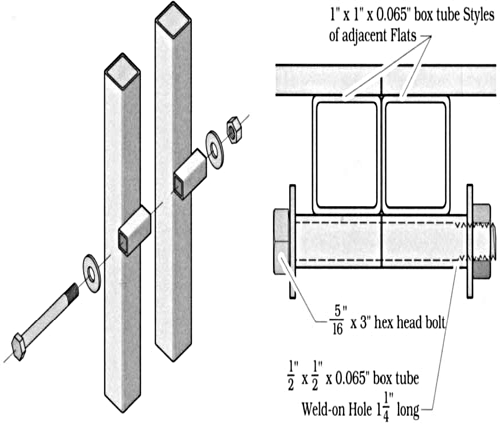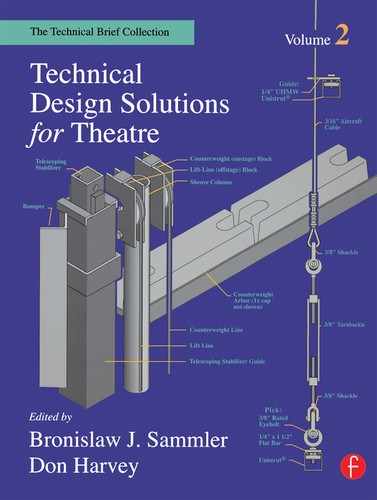Randy Steffen |
Weld-on Holes |
During a production of Life Is a Dream at the Yale School of Drama, the technical staff was faced with recycling 8×8 hard-covered, steel-framed flats from a previous show. Because changing the shape of some of the flats made many of the original bolt connections useless, the staff decided to “weld on new holes.”
The technique was suggested by a student who had worked in a theatre where the standard method of connecting steel-framed flats was to weld small pieces of box tube to the back of the flats and connect them with ![]() hex head bolts as illustrated in Figure 1.
hex head bolts as illustrated in Figure 1.

FIGURE 1: WELD-ON HOLES
After a couple of test samples had been made, pieces of ½″ × 0.065″ square tube were cut to a length of 1¼″, deburred, and bolted tightly into pairs (all faces flush) with 3″-long ![]() hex head bolts. At load-in, after the flats had been laid out face down on the stage floor, a single carpenter spaced the holes at convenient intervals along the framing and welded them in place. Installation was incredibly quick and simple.
hex head bolts. At load-in, after the flats had been laid out face down on the stage floor, a single carpenter spaced the holes at convenient intervals along the framing and welded them in place. Installation was incredibly quick and simple.
Weld-on holes offered two distinct advantages in this particular situation. First, relatively unskilled labor was easily able to mass-produce them. Second, the flats were sent to the paints department much sooner than they would have been otherwise, since building weld-on holes is not part of the critical path during a build.
